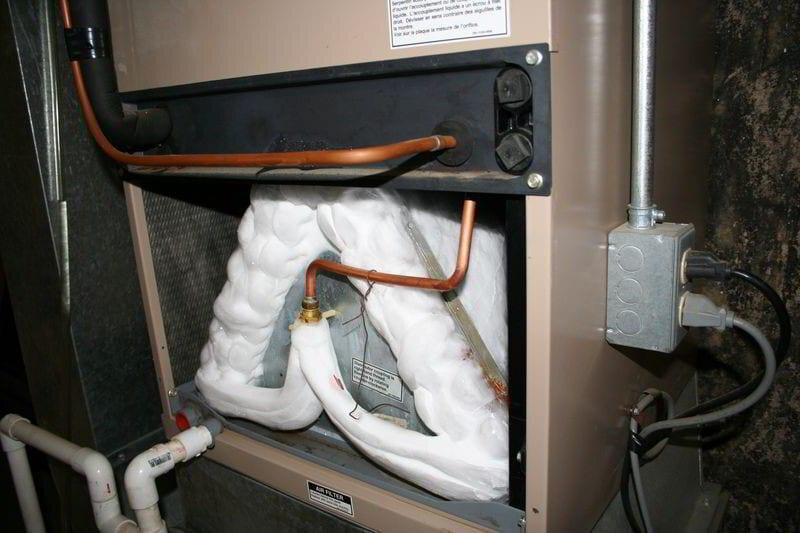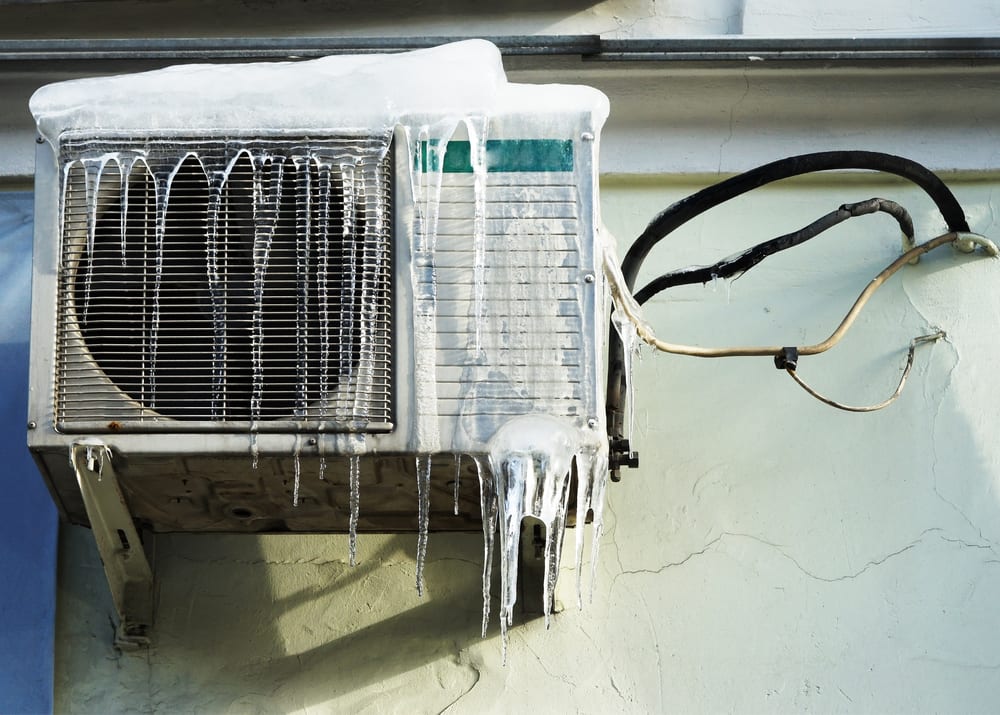Tips for Thawing a Frozen AC Pipe - Reinstating Normal Functionality
Tips for Thawing a Frozen AC Pipe - Reinstating Normal Functionality
Blog Article
We've unearthed this post relating to Why Is Ice On My Outside Air Conditione directly below on the web and decided it made sense to write about it with you over here.

Introduction
Finding that your AC pipe is iced up can be concerning, especially throughout hot summer season when you rely upon your a/c unit the most. Recognizing what to do in such a situation is critical to prevent additional damage to your air conditioning system and ensure your convenience inside.
Understanding the Causes
A number of variables can contribute to the freezing of an a/c pipeline. Recognizing these reasons can aid you resolve the issue efficiently.
Lack of Airflow
One common root cause of an icy air conditioner pipeline is inadequate airflow. When the airflow over the evaporator coil is restricted, it can cause the coil to drop below freezing temperature, resulting in ice development on the pipeline.
Reduced Refrigerant Levels
Not enough cooling agent degrees in your AC system can also cause a frozen pipe. Reduced refrigerant levels can trigger the stress in the system to drop, causing the freezing of moisture on the evaporator coil.
Cold Weather Conditions
In chillier environments, freezing temperatures outside can contribute to the freezing of air conditioner pipelines. If your air conditioner system is not effectively shielded or if there are leakages in the ductwork, cool air can penetrate the system, causing the pipe to ice up.
Dirty Air Filters
Unclean or stopped up air filters can limit air movement in your a/c system, causing different issues, consisting of an icy pipeline. It's important to replace or cleanse your air filterings system routinely to make certain appropriate airflow and protect against ice build-up.
Indications of a Frozen AC Pipe
Acknowledging the signs of an icy air conditioner pipe is critical for punctual action.
Minimized Airflow
If you see a significant decline in airflow from your vents, it might indicate an icy pipeline.
Ice Buildup on the Pipe
Visible ice accumulation on the refrigerant line or the evaporator coil is a clear indicator of an icy air conditioner pipeline.
Strange Sounds from the Unit
Uncommon audios, such as hissing or gurgling, coming from your air conditioning unit can signify that there's ice existing on the pipe.
Immediate Actions to Take
When confronted with a frozen AC pipeline, it's vital to act rapidly to prevent more damages to your cooling system.
Turning off the air conditioner
The primary step is to switch off your a/c unit to avoid the system from running and exacerbating the concern.
Looking for Blockages
Examine the area around the interior unit for any kind of obstructions that might be obstructing airflow, such as furnishings or curtains.
Thawing the Pipe
You can make use of mild approaches like placing towels soaked in cozy water around the icy pipe to assist thaw it gradually.
Preventive Measures
Taking preventive measures can assist stay clear of future occurrences of an icy AC pipeline.
When DIY Methods Fail
If your attempts to thaw the pipeline or address various other issues are not successful, it's time to contact a specialist.
Importance of Hiring a Professional HVAC Technician
A licensed HVAC professional has the competence and devices essential to diagnose and fix concerns with your air conditioning system safely and successfully.
Regular Maintenance Checks
Schedule routine upkeep checks with a specialist HVAC specialist to make sure that your air conditioning system is running efficiently.
Changing Air Filters
Routinely change or clean your air filters to prevent air movement restrictions and maintain ideal performance.
Shielding Exposed Pipes
If your air conditioner pipelines are exposed to cold temperatures, think about shielding them to avoid cold during winter season.
Seeking Professional Help
If DIY techniques fall short to solve the problem or if you're unclear regarding how to proceed, it's finest to seek aid from a certified HVAC professional.
Final thought
Taking care of an icy air conditioner pipeline can be an irritating experience, however recognizing exactly how to respond can assist lessen damages and restore comfort to your home. By understanding the causes, identifying the signs, and taking timely action, you can successfully attend to the issue and protect against future events.
Frozen AC Line: Why It Happens & What To Do About It
A frozen AC line can be a rather peculiar sight in a place like Phoenix, Arizona where nothing ever freezes. In this post, we’ll discuss what makes an air conditioner line frozen – and what you can do about it.
Dirty Air Filters
Did you know that you should be cleaning or replacing your air filters on a monthly basis? Failing to do this can result in airflow issues that, in turn, cause your evaporator coils and lines to freeze over. You’ll notice a buildup of ice on both components, although the buildup on your pipes will, of course, be more evident unless you open your air condition up to reveal the coils.
What To Do About It
Give your air filter a good cleaning if it’s reusable. If not, replace the filter outright. Next, switch your air conditioner’s fan setting on and leave it there for 2-3 hours. This will draw warm air in, helping to thaw your evaporator coil. You can also check out this article for some tips on cleaning the coils themselves if you’d like to speed the process up. Before you switch the unit back to its normal state, make sure the supply vents are completely unobstructed and free of dust or other debris.
If you keep having this issue even after replacing your filters regularly, contact a local HVAC repair company and have them inspect your evaporator coil, ductwork, and any other components that may be at fault. If you live in the Phoenix, Arizona area, give American Home Water and Air a call.
Low Refrigerant Levels/Leakage
What To Do About It
Contrary to what air conditioner “recharge” companies often tell their clients about refrigerant, it should never need to be simply refilled. You see, refrigerant runs in what experts refer to as a “closed loop.” Refrigerant really shouldn’t be leaving that loop. If it is, you’ve got a leak.
Paying someone to come and pump more refrigerant into your system (aka “recharge” it) isn’t the solution. Doing that will simply kick the can down the road. Besides, refrigerant leaks can be harmful to the environment and people in your home.
Rather, you need to take care of the leak with the help of a technician. Check out this article for some more information about dealing with air conditioners that are leaking refrigerant. Before you contact a technician, switch your thermostat to the off position. Then, switch the fan setting on and let it run for 2-3 hours so the unit can thaw.
Improper Temperature Setting
Improper temperature settings can also cause a drop in your air conditioner’s pressure. What many people don’t realize is that air conditioners are actually designed to run when temperatures have fallen above roughly 60 degrees Fahrenheit. If you run the unit when it’s cold outside, you’ll run into many issues, including frozen components.

As a reader on Have a Frozen AC Line? Here’s How to Fix It, I imagined sharing that piece of content was beneficial. Are you aware of somebody who is fascinated with the subject? Be sure share it. We appreciate reading our article about How can I fix an air conditioner’s frozen pipe?.
Click For More Information Report this page